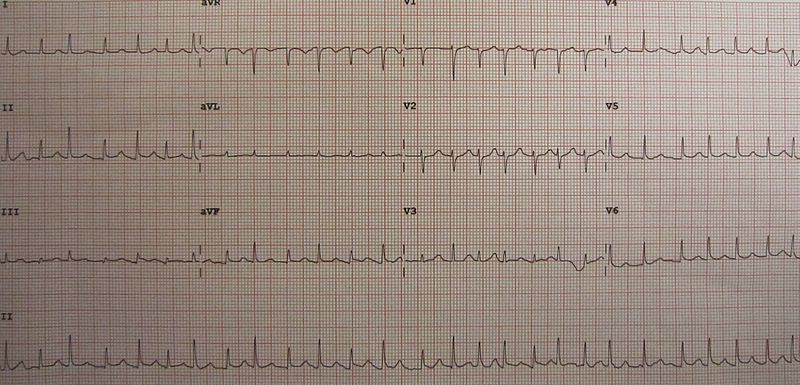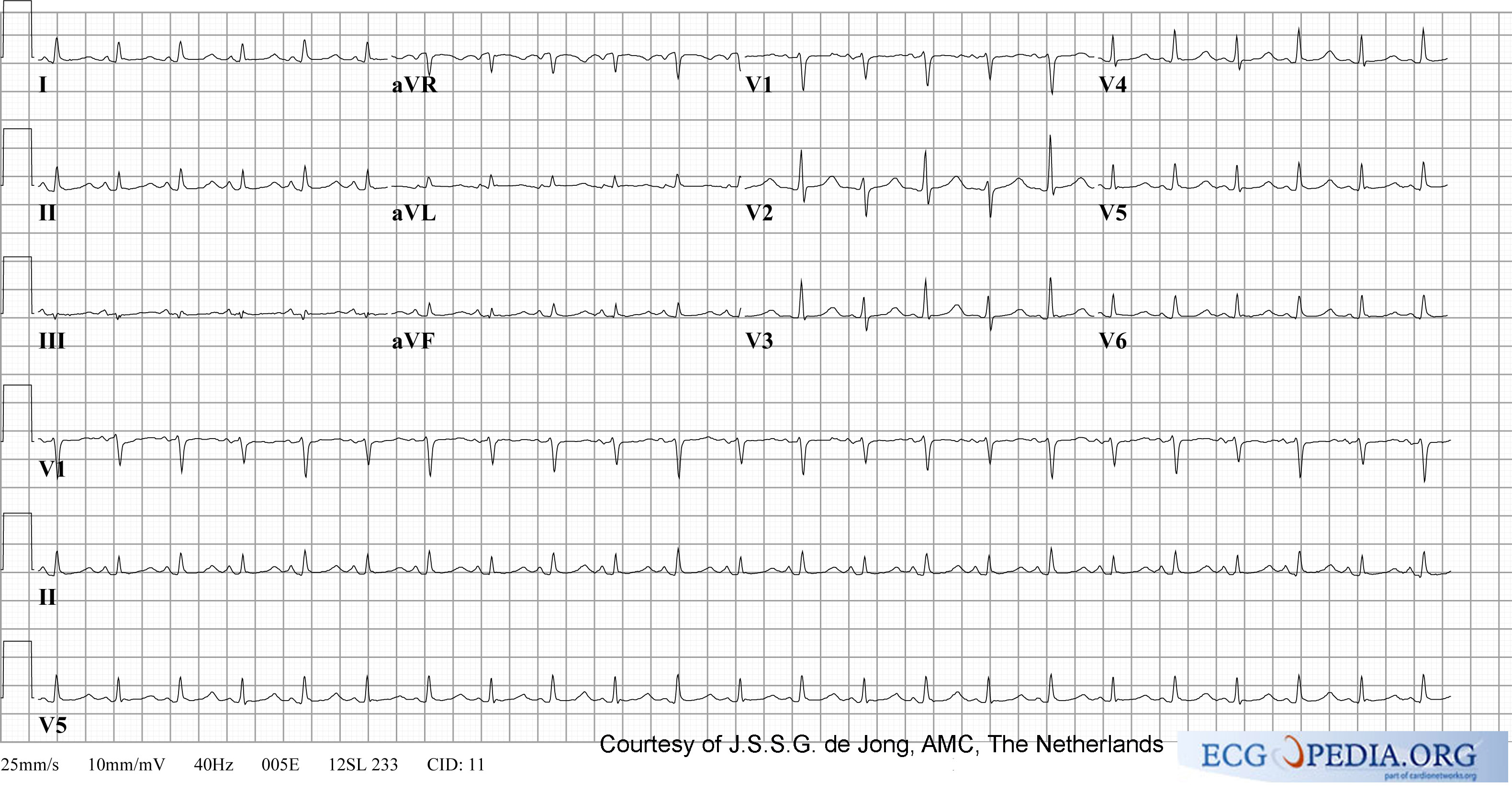Electrical alternans: Difference between revisions
| Line 4: | Line 4: | ||
{{SK}} QRS alternans, alternans | {{SK}} QRS alternans, alternans | ||
==Overview== | ==Overview== | ||
'''Electrical alternans''' is an [[electrocardiogram|electrocardiographic]] phenomenon which describes teh beat to beat alternation in the height (ie.e amplitude), duration (the length of the interval) or the direction (up or down) of any of the EKG complexes or intervals. | '''Electrical alternans''' is an [[electrocardiogram|electrocardiographic]] phenomenon which describes teh beat to beat alternation in the height (ie.e amplitude), duration (the length of the interval) or the direction (up or down) of any of the EKG complexes or intervals. While electrical alernans is usually thought of as alternation in the height or direction of the QRS complex, there can also be [[P wave]], [[PR interval]], [[QRS complex]], [[R-R interval]], [[ST segment]], [[T wave]], or [[U wave]] forms of alternans (see classification below). | ||
==Classification== | ==Classification== | ||
Revision as of 15:33, 8 September 2012
|
Pericarditis Microchapters |
|
Diagnosis |
|---|
|
Treatment |
|
Surgery |
|
Case Studies |
|
Electrical alternans On the Web |
|
American Roentgen Ray Society Images of Electrical alternans |
Editor-In-Chief: C. Michael Gibson, M.S., M.D. [1]
Synonyms and keywords: QRS alternans, alternans
Overview
Electrical alternans is an electrocardiographic phenomenon which describes teh beat to beat alternation in the height (ie.e amplitude), duration (the length of the interval) or the direction (up or down) of any of the EKG complexes or intervals. While electrical alernans is usually thought of as alternation in the height or direction of the QRS complex, there can also be P wave, PR interval, QRS complex, R-R interval, ST segment, T wave, or U wave forms of alternans (see classification below).
Classification
There can be alternans of any of the EKG waveforms or intervals:
P wave alternans
PR interval alternans
QRS complex alternans
R-R interval alternans
ST segment alternans
T wave alternans
U wave alternans
(of QRS complex amplitude or axis between beats.
Pathophysiology
QRS alternans can be observed in cardiac tamponade and is thought to be related to changes in the ventricular electrical axis due to fluid in the pericardium.
Causes
Differentiating Electrical Alternans form other Disorders
The electrical form of alternans should be differentiated from the mechanical form alternans in which case there is alternation of the strength of the pulse as is observed in pulsus alternans. Electrical and mechanical alternans may coexist.
Electrocardiographic Examples


